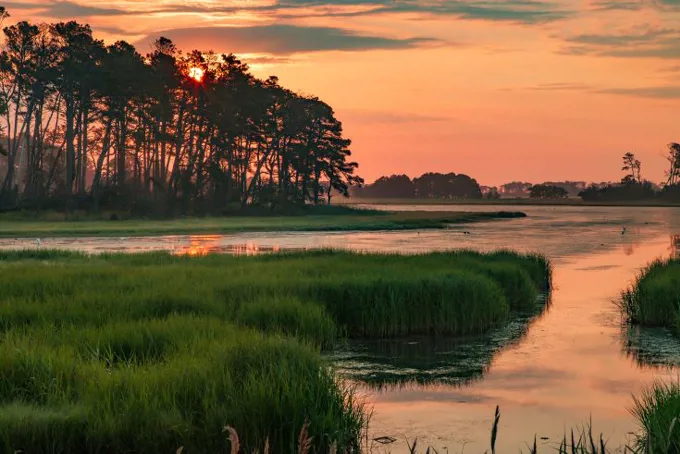
The VMRC’S First Decision on Cost Under the Living Shoreline Law
Living Shorelines Reduce Water Pollution But Cost More
Waterfront property owners with a failing bulkhead want to know whether they can replace that structure with another one or instead must install a living shoreline. This was never a question until 2020, when Virginia enacted the living shoreline law. The new law requires a living shoreline unless the “best available science” shows that a living shoreline is not “suitable”. We have noted in this blog that living shorelines perform better than hardened shorelines (e.g. bulkheads and revetments) when it comes to preventing water pollution and on a number of other environmental factors. The problem is that building the living shoreline costs more, a lot more. The numbers add up. We are seeing in our law practice cost between $200 and $700 per foot to install a living shoreline. That’s why one of our articles took a deep dive into the question of how cost ought to play in the choice between a living and a hardened shoreline.
A living shoreline use plants or other natural elements to stabilize estuarine coasts, bays, and tributaries. Shutterstock: Sara Winter
The VMRC Refused To Consider Cost In The Westphal Case
The Virginia Marine Resources Commission has heard about a dozen living shoreline cases since the new law went into effect. But in March 2022 the Commission heard its first case where the applicant forced the VMRC to confront head-on the higher cost of the living shoreline. The homeowner of a waterfront property in Hampton, Virginia faced a cost of $12,000 for rip-rap to stabilize 112 feet of shoreline. The living shoreline option would have cost $70,000. The homeowner opted for the $12,000 solution. The first stop was the Local Wetlands Board in Hampton. It said on a unanimous vote that the cost is not its concern. The Wetlands Board rejected the $12,000 solution. The homeowner appealed that decision to the VMRC and lost there also (on a 5-1 vote).
There were some complicating factors in the case, one of those being that this was a “violation” case (the homeowner hired a contractor who installed the rip-rap without getting the required permit). But to make sure that there was no misunderstanding about how Hampton viewed the matter, one of the attorneys for the City of Hampton appeared at the VMRC hearing to drive home the point that Hampton’s view of the living shoreline law is that cost does not matter. One of the Associate Commissioners thanked her on the record at time 1:45:15 for her “excellent presentation” right before the VMRC affirmed the Hampton decision by a 5-1 vote.
A hardened shoreline includes seawalls and bulkheads, which are often the default method of shoreline protection option selected by property owners to “hold-the-line” along the edge of their property. Shutterstock: Gareth Janzen
What This Means For The Future
The Waterfront Law Team has found plenty of precedent in the law saying that cost must be taken into account in situations like this one. We shared those precedents with our readers in an earlier post in this blog. We also do not for one minute take the result of this case as meaning that the VMRC will always ignore cost in all of its future decisions where it interprets the living shoreline law. The decision makers on the commission are ordinary citizens, except for the Commissioner (who holds the chair in an “acting” capacity pending the new Governor’s appointment of a Commissioner to replace the recently retired Mr. Bowman). The Acting Commissioner was the lone vote for the applicant. He was the one person who thought cost mattered, saying on the record at time 1:43:05 of the hearing that during his 20 years working at the Commission, serving in a variety of roles, “there is no situation in which cost is not considered . . . it is unrealistic to pretend that cost does not matter”. The VMRC staff agreed, writing in the Staff Recommendation that “the costs to construct any living shoreline are an important and necessary component” of the decision-making process under the Living Shoreline law. We would also point out that the Living Shoreline law has yet to come before any court. All the decisions so far are those made by the regulatory agencies. Our experience is that these regulatory agencies do not always decide the same issue tomorrow the same way as they decided it today.
To find out what this all means, stay tuned to this blog for new developments.
In Conclusion
If you are submitting a joint permit application (JPA) for a shoreline project you are doing so at a time of uncertainty at the Local Wetlands Board and at the VMRC. Our team of Waterfront Property Law attorneys know the issues that you will face in the processing of your JPA. Although we cannot promise a particular outcome, favorable or otherwise, our team has the legal knowledge that positions us to help you build into your JPA the right type of information. We have worked with the regulatory agencies. Our experience will increase the probability for a good result on your shoreline project. Call us. We can help.
